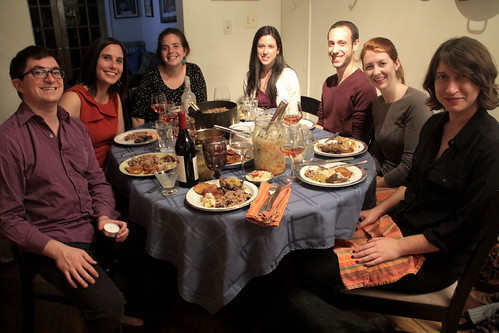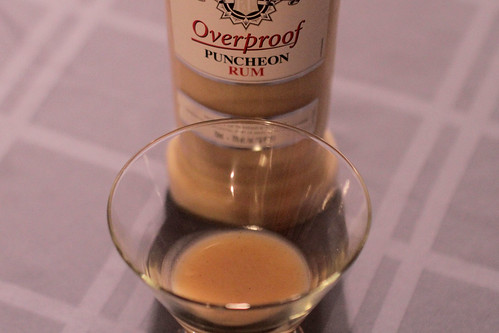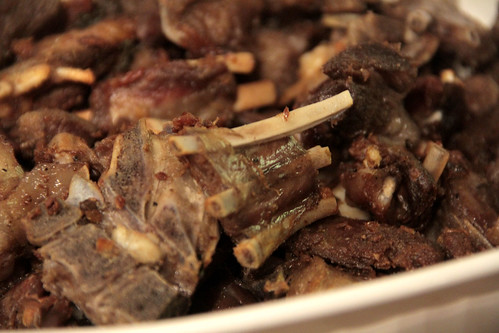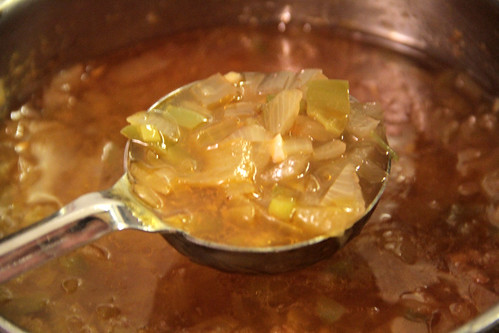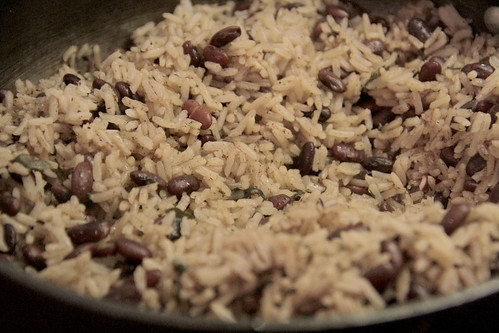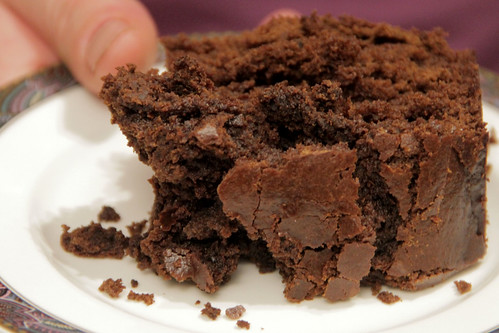
It's absurd to squeeze a survey of Indian cuisine into one meal. From Kashmir to Kerala to Kolkata, there's just a bewildering diversity of flavors, ingredients, and techniques that very well merit a 35-meal tour of all the states and territories. (Ooh, wow, that does sound fun.)
I did my best to incorporate as much regional diversity as possible into a single meal, while also creating a cohesive whole that collectively surveys a representative expanse of what's to be found in India. Of course there's much missing — no paneer, no saag, no dosa — but I did get in a lot of classics like dal, biryani, chaat, and masala chai. Where a dish has a clear regional provenance, I've listed the place, otherwise it's something that's enjoyed over a wide area or even the entire country.
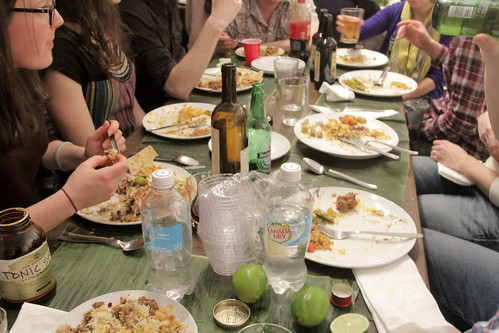
Interest in the meal was so strong that we rented out space at the new Court Tree Collective, with a kitchen and seating for 25. Having such a crowd allowed for a greater variety of dishes, though I probably could have scaled back by one or two for the sake of sanity. It took two separate shopping trips, both times stumbling home with my backpacking pack full of rice, grains, yogurt, meat and huge varieties of spices!
Now let's get to it:
Gin and tonic
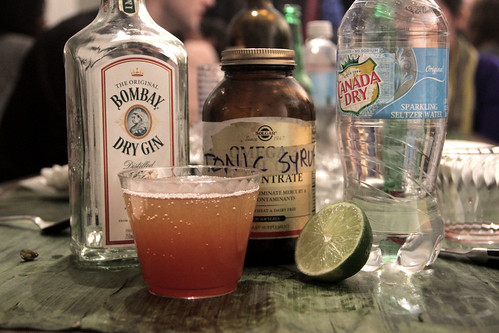
You know when you have to add gin to something to make it taste better, that something had to have been pretty rough. In this case, it's quinine, whose anti-malarial properties were appreciated by the soldiers of the British East India Company, but bitter flavor was found hard to swallow. Mixed with gin, lime, and sugar, however, and it became a drink whose popularity outlived the medical need.
Why the odd ruddy color and hand-labeled bottle? I made the tonic syrup from scratch, with a kit my mom sent me from Oaktown Spice Shop. With allspice, cubeb pepper, lemongrass, citric acid, and chinchona bark (the source of the quinine), plus the juice and zest of lemon, lime, and orange, the flavor was far richer and more complex than something like Schweppes. Plus, when you make it from syrup, you can choose the relative sweetness and strength of flavor of your drink. If you're a serious G&T fan, it's worth exploring.
Pani puri | Potato-filled crispy puffs with chutney | Recipe
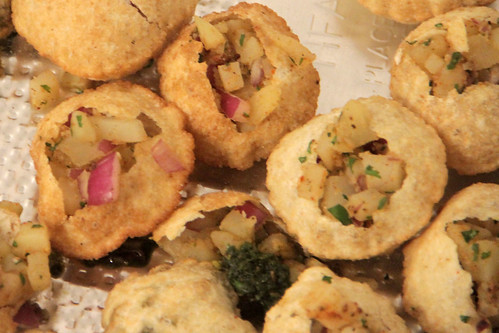
Indian English leans on hyperbole when describing its food. I saw the word "lip-smacking" on a lot of recipes, particularly those for chaat, a genre of intensely-flavored, intriguingly-textured, quickly-eaten street foods based around a fried element, of which pani puri is probably the most popular. The name means "water puffs," and they're assembled by filling a fried puff with a starchy mix (in this case, and probably most common, potatoes and onions), before dousing in a thin but strongly flavored sauce (in this case, and probably most common, a blend of tamarind and cilantro-mint chutneys thinned with water). A little dollop and it becomes a dahi puri, "yogurt puff." They need to be eaten very quickly after assembly, lest the crispy puffs get soggy from the filling.
Note that rather than making the blended chutney as described in the recipe, I made them separately so they could be used for other purposes. The recipes for those are farther down.
Punjab/Delhi: Dal makhani | Black lentil and kidney bean stew | Recipe
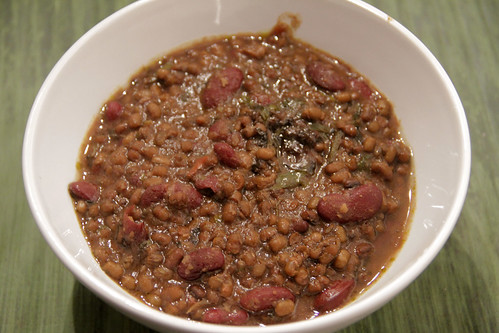
It says a lot about India's esteem for lentils that the most famous dish at one of the country's most highly regarded restaurants is a dal. On my first trip to India, my parents and I went to Bukhara in Delhi and had the renowned dal Bukhara, a richly flavored stew concentrated by slow cooking overnight over a wood fire. It's just one of thousands of variations of dal makhani, a stew of whole black lentils and kidney beans invented by a Punjabi immigrant who opened a restaurant in Delhi after the Partition.
Most recipes for this hearty, tomato-tinged stew call for pressure cooking. Not having the right equipment, nor the desire to rush things, I found a recipe going the opposite direction, with a slow cooker, in search of Bukhara's glory. I ended up cooking it even slower and longer than the recipe calls for, finishing it off with a few hours on high with the lid off to cook down the liquid and concentrate the flavors, and to compensate for the extra cooking time I bumped up all the spices by a bit. I made it completely vegan — that is, oil instead of ghee — until the end, when I pulled out the above bowl for our vegan guests, and doused the rest of the pot with ghee and milk. I think it turned out super-well, all those spices blending well with the rich, almost smoky, depth that comes from cooking legumes for so long.
West Bengal: Shorshe maach | Carp in mustard sauce | Recipe
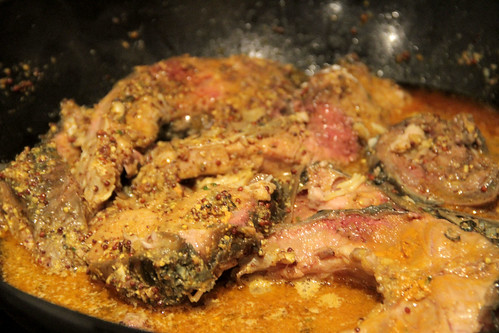
Mustard and freshwater fish are the two hallmarks of Bengali cuisine, a lush land where the Ganges meets the ocean, so this dish was a clear choice to represent the region. (As a lovely indication of the syncretic nature of New York's foodways, though, I bought the fish from a Chinese grocer, a block away from the Indian supermarket which happened to be all-vegetarian.) The dish was promising but didn't quite turn out flavorful enough, probably because I was rushed to complete it and forgot to add salt and pepper at the right moment. That said, the dual assault of mustard, both from the oil that the fish steaks were fried in as well as the paste I blended up from raw seeds, and the firm flesh of the carp, at least brought the core elements.
Hyderabad: Murgh dum biryani | Yogurt-marinated chicken slow-cooked with rice | Recipe
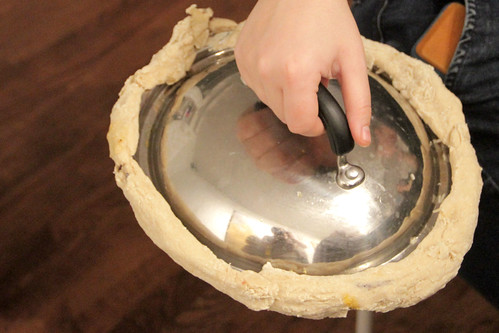
I get the feeling that biryani is to Indian cuisine what chili is to American: substantial regional variation and strong opinions on the right way to do it. In opposition to one approach where the meat and the rice are cooked separately and mixed only right before serving, I chose to follow a technique used in the royal court of the Nizams in Hyderabad, where parboiled rice is layered on top of richly marinated meat, which is most commonly chicken. The scents of the dozen or so spices in the marinade, plus the silky moisture from a generous bath of yogurt, perfume all of the rice. To ensure maximum concentration of flavors, the flame is as low and diffuse as can be, and the lid is wrapped in a rope of dough to trap in every bit of steam. That means the final cooking is blind, so you can’t check on how things are going, which is always a bit nerve-wracking.
I think everything turned out super deliciously, with fully cooked and tender chicken and delicately textured rice. The only problem being that the recipe uses so much rice that there was no room in the pot to mix up the chicken and the rice, nor the bowl I inverted the mix into, so all the chicken got eaten off the top and we were left with a mountain of rice. If you end up making this recipe, be sure to use a larger pot than you might think you need, or else you can cut back on the rice and just have a higher meat proportion.
Kashmir: Rogan josh | Goat in red sauce | Recipe

Goats are well suited to the steep terrain of Kashmir, which is also renowned for its moderately spiced and richly flavored chilies, so it’s fitting that the region’s most famous dish combines the two. I followed the style of the pandits, a sect of Hindu Brahmins that the term “pundit” is named after, by not using onions or garlic, so the richness of the sauce comes only from the yogurt and spices — and the color only from chilies, not even tomatoes. (I couldn’t find the rottan jot that’s apparently used to lend even more redness.) I thought the dish, which bubbled slowly and happily on the back burner as I prepared the rest of the meal, was a treat, a bold but not overwhelming blend of spices standing up to the gamy meat.
Tamil Nadu: Chettinad vendakkai masala | Okra in tomato curry | Recipe
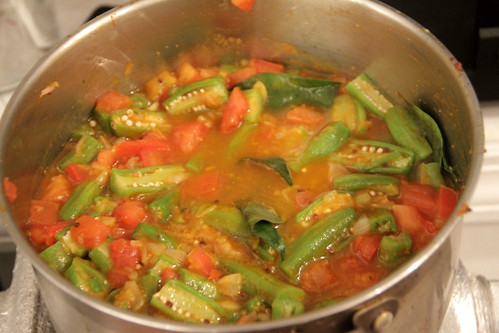
It’s hard to find okra that’s not insipid and flabby in the winter. I’d bought and frozen some gorgeous farmers market okra at the height of the summer, anticipating a meal that’d make use of them. I could think of no more germane meal than India’s, where they’re coyly called “lady’s fingers.” This preparation comes from the Chettinads, a prosperous class in the southern state of Tamil Nadu which is famous for its food. Diana and Colin led the preparation of this one, with a healthy dose of tomatoes making for a moderately spiced and all-around tasty dish that highlighted the okra’s firmness and happily downplayed its sliminess.
Kerala: Paruppu kulambu | Pigeon pea sambar with mixed vegetables Recipe
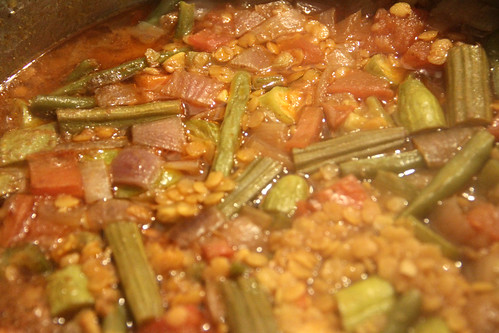
To the east, and also contributing a vegan dish, is Kerala, a place of friendly, modest people that not so modestly calls itself “God’s Own Country.” Befitting its dense network of lush inland waterways, the sambar is a typical dish that's a particularly soupy dal with various vegetables. Taking advantage of the abundance at the Indian market, I threw in the most uncommon vegetables I could find from the suggestions in the recipe, with odd names like ashgourd and timbora, though I should have skipped the drumsticks since they turned out very stringy.
Assam: Amitar khar | Green papaya in alkaline mustard sauté | Recipe
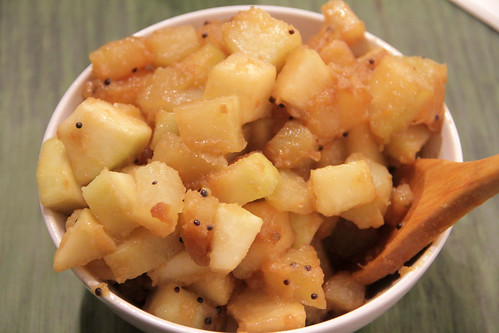
The Northeast states are connected to the rest of India by a sliver of land between Nepal and Bangladesh known as the "chicken's neck." The physical isolation highlights the distinctiveness of these so-called Seven Sister States, which in many ways are more culturally and ethnically aligned with Southeast Asia than India. This dish provides an example of a very different sort of cuisine, which uses few spices yet employs a unique technique of sautéeing a food that's more commonly seen raw. If I could have found it I would have used plantain ash, but instead I substituted baking soda, which lends a bit of crispness as well as a distinctive salt-ish flavor.
Chapati | Flatbread | Recipe
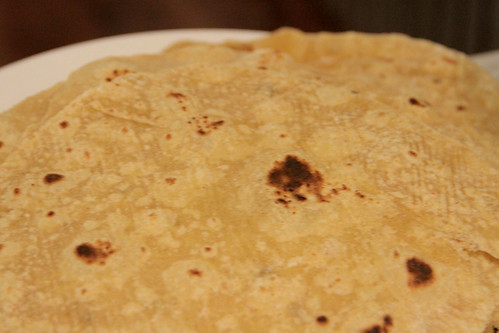
India offers a huge variety of flatbreads, from the well-known naan, a yeasted, toothsome bread originating in Central Asia and popular in the north, to crêpe-like, griddle-cooked, dosas in the south, generally filled like an airy, crispy burrito. But the humble chapati, made of nothing more than grain, water, and elbow grease, is a food that’s made and enjoyed in probably hundreds of millions of homes on a frequent basis, a cheap tummy-filler that’s also a great at conveying a morsel of food to the mouth.
Sarah-Doe judiciously added enough water to a pre-mixed blend of durum semolina and wheat bran until it was not too dry but not yet sticky, and rolled them out, and then Max cooked them one at a time in a pan until they got just a bit toasty. They tasted every bit as nutty and satisfyingly warm as I remember from India.
Kesar chawal | Saffron rice | Recipe
By the time I got to cooking this part, we were already running short on time and pots. I got creative by preparing the whole thing in a rice cooker, first heating the ghee and throwing the spices in the bottom of the pot (protip: it won't heat unless you leave the lid on!), and then adding the soaked rice and the saffron. It actually turned out quite well, though I've since read that rice cookers are better suited for moister East Asian short rice preparations than drier, fluffier basmati long rice, but you could have fooled me.
Bihar: Lauki ka raita | Spiced yogurt with calabash | Recipe
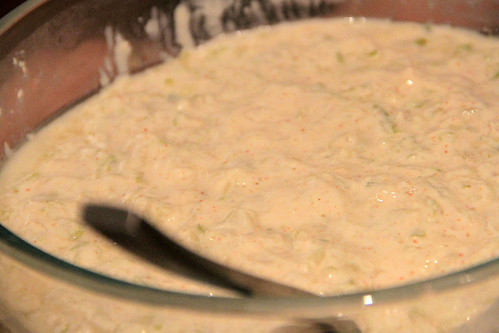
I've found cooling relief in mildly-flavored yogurt sauces during many a bit-too-spicy Indian meal in raita. But it turns out that its name comes from the words for "pungent mustard," thus it's intended as a sort of flavor-enhancing chutney. This version comes from Bihar, a populous Northern state between Uttar Pradesh and West Bengal, and features calabash, a long, large, and mild-flavored vegetable that's also known as bottle gourd because it can be dried and used as a vessel. In any event, when grated, boiled, drained, and squeezed dry, it lends nice texture and a little flavor to the spiced yogurt, a good enhancement to many dishes, especially biryani.
Chutneys | Condiment sauces | Recipes: Tamarind, Cilantro-mint
If you've ordered northern Indian food, chances are you've seen these sauces. They're so common that many know them simply as "sweet chutney" and "green chutney." As with most Indian foods, they're quite a bit more complex than that: the "sweet" one also carries the puckering tang of tamarind plus a moderate chili heat, and the "green" one features two fresh-flavored greens with aromatics and a rich spice blend. If you go for the sweet one, I really recommend seeking out the pourable tamarind concentrate rather than the compressed block, it'll save you lots of time. Both of these recipes turned out really well, and were great in the pani puri in addition to being a complement to pretty much everything else.
Aam ka achar | Mango pickle | Recipe
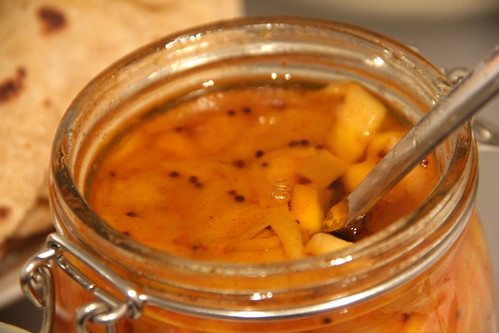
Unlike the European version, Indian pickles aren't done in vinegar, but rather with spices and oils. They're an endemic part of most cuisines around the vast country, with moms and grandmas making their own pickles the way many make jam elsewhere. I couldn't make this mango pickle right for three reasons reasons: done right, it takes unripe mangoes a few weeks to pickle, of which the first several days should be spent in direct sunlight, and I had a week in a dreary winter with half-ripe mangoes. I went with this recipe because it accounted for not-perfectly-unripe mangoes, and was generous with the amount of time required. And my goodness, they turned out pretty well! The mustard flavor is of course there due to both the oil and the seeds, but the mango brings through a moderate sweetness while the chilies and other flavors bring an intriguing zing to every bite. Almost all of the jar got eaten!
Masala chai | Milk tea with spices | Recipe

Tea is the most Indian of drinks, but wasn't so commonly consumed there until the turn of the 20th century, when the British began to exploit the very market that was growing the crop. Putting their own spin on it, the new chaiwallas tossed in spices that were considered "warming," such as ginger and cardamom, along with whatever else suited. Masala means spice mix — chai on its own is just the Hindi word for "tea" — and personal preferences for which ingredients to put in and how much, such as cinnamon, star anise, and clove, vary considerably, as well as opinions on whether it's better to grind the spices or use them whole. I started with the recipe here, with the addition of a bit of star anise, a bump up of the cardamom, and a cheap "dust" tea instead of the Assam because that's what most commonly used. It was fantastic, I'd have consumed a whole quart were I not concerned for the caffeine!
Kaju burfi | Cashew "shortbread" | Recipe
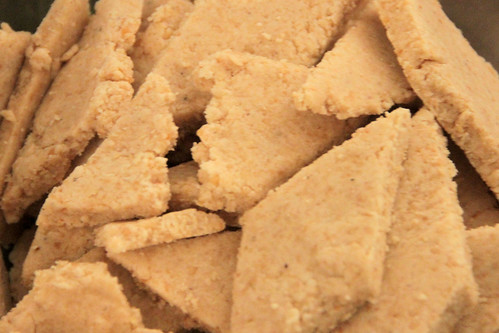
The folks who sell burfi (sometimes, and unfortunately, known as barfi) have a great racket going. Every Indian I've asked about it said this is something that you buy from the store, not make yourself, as if it's something very complicated. But it turns out to be one of the simplest desserts I've ever made! Really all it takes is grinding cashews (or better yet and probably cheaper, using cashew powder if you find it), mixing them with powdered milk and sugar, kneading with a tiny bit of water, rolling out, cutting and refrigerating. Boom, you've got a mildly sweet and rich finger food that is simply an ideal pairing with a complexly spiced masala chai. Burfiwallas, I'm on to you!
Gajar ka halwa | Carrot pudding

Think carrots are weird for dessert? Well, remember the existence of carrot cake, and let's talk. This is another deceptively simple dish — little more than carrots, milk, and sugar — though compared to the burfi it takes rather more labor. In particular, to boil down a bunch of milk until there's no liquid left takes a lot of stirring to avoid scorching. (Grating all those carrots could have been an even bigger pain, but fortunately I have a grating attachment for my Cuisinart.) With a dash of ghee, it becomes a pretty rich dessert, but hey, it's carrots, so it's healthy, right?
Our friends the Bansals helped us with the menu; this recipe comes from their family.
Carrots - 1 kg
Milk - 1 litre
Sugar – 6 to 8 tablespoons (adjust to taste)
Pure Ghee - (clarified butter) 2 tablespoons.
Almonds - Blanch in hot water for 15 minutes, drain and peel. (I found sliced blanched almonds at the store!)
Peel , wash and grate the carrots. Cook the carrots in milk on medium to high fire, stirring from time to time so that it does not catch the bottom of the vessel, till the milk evaporates and there is no excess liquid. Add the sugar. After the sugar melts add the ghee/butter and cook for about 15 mins on medium heat (or till the ghee/butter appears to separate from the carrot mix), stirring frequently so that it does not catch the bottom of the vessel. Add the chopped almonds and serve hot.
 Raise your hand if this is your first nosh!
Raise your hand if this is your first nosh!
Huge thanks to the folks who came early to help out: Sarah-Doe, Max, Diana, Colin, and Christen, to Hrithik and Reena Bansal for their advice from across the world, to Sophie for the Bollywood playlist, and to all the attendees whose donations, after doubling, will lead to almost 8,000 meals given by the World Food Program. Researching, shopping, and preparing for a crowd is a whole lot of work, but seeing how much impact one meal's worth of donations can make is really motivating — and sharing a crazy tasty meal with friends new and old makes it so much fun.
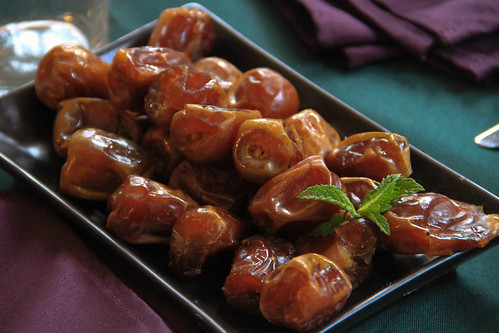

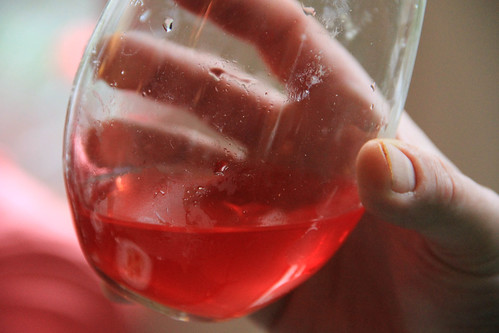
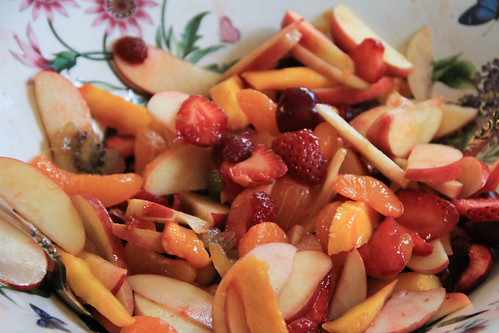
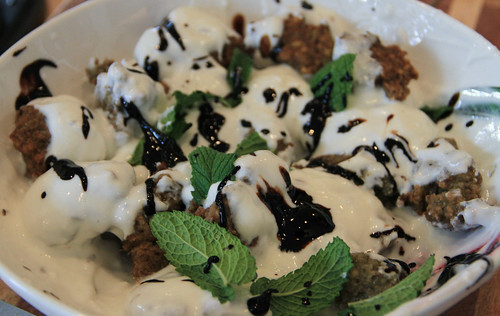
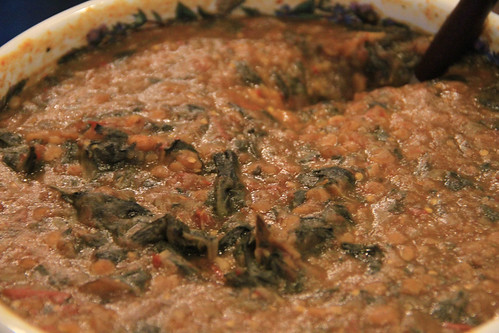
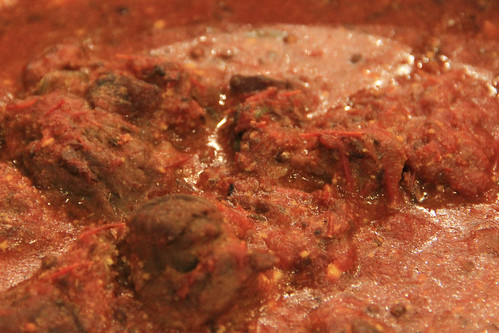
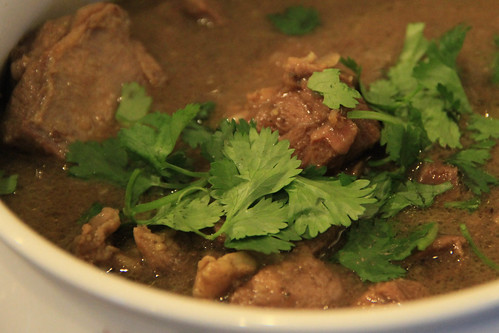

 We've already enjoyed three meals from the Horn of Africa, but it's taken us until the K's to start into East Africa proper. It looks a whole lot more like Central African, though I'm happy and relieved to report that we found it quite a bit tastier.
We've already enjoyed three meals from the Horn of Africa, but it's taken us until the K's to start into East Africa proper. It looks a whole lot more like Central African, though I'm happy and relieved to report that we found it quite a bit tastier.

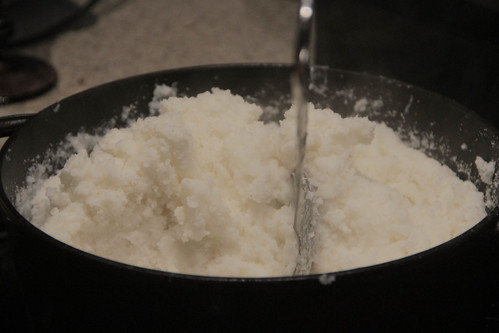

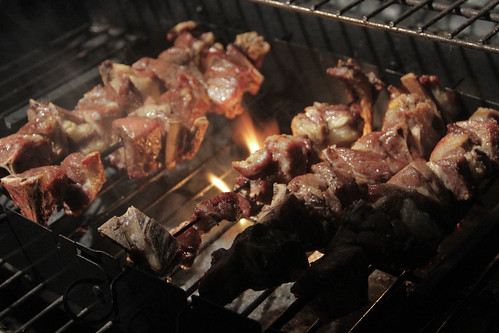
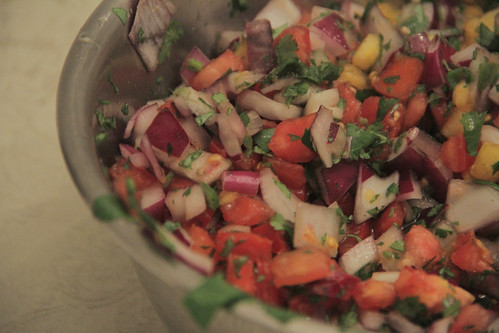
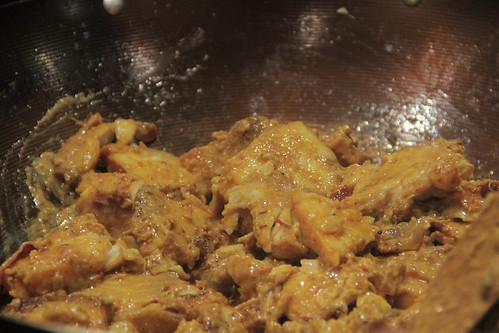

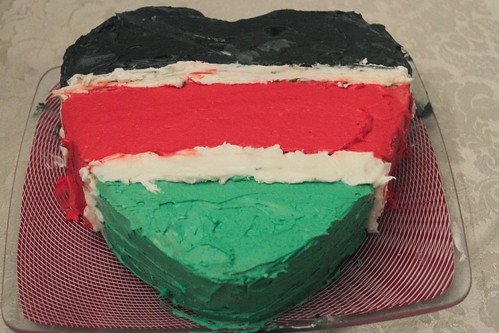

















 Raise your hand if this is your first nosh!
Raise your hand if this is your first nosh!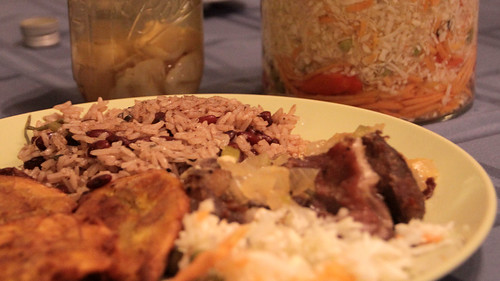 Have you ever pondered what would have happened if something went differently at a given point in history? Compared with the rest of the Western Hemisphere, Haiti is sort of a real-life example of contrarian history. The crux is a slave revolt against French colonial masters that, incredibly, led to independence in 1804. The slave system was ruthless and required a constant influx of slaves, which had the silver-lining consequence of a strong syncretic culture quickly developing that combined French and West African influences — ranging from language (Kreyol is mostly French vocabulary but has strong West African grammatical influence) to cuisine to religion.
Have you ever pondered what would have happened if something went differently at a given point in history? Compared with the rest of the Western Hemisphere, Haiti is sort of a real-life example of contrarian history. The crux is a slave revolt against French colonial masters that, incredibly, led to independence in 1804. The slave system was ruthless and required a constant influx of slaves, which had the silver-lining consequence of a strong syncretic culture quickly developing that combined French and West African influences — ranging from language (Kreyol is mostly French vocabulary but has strong West African grammatical influence) to cuisine to religion.
